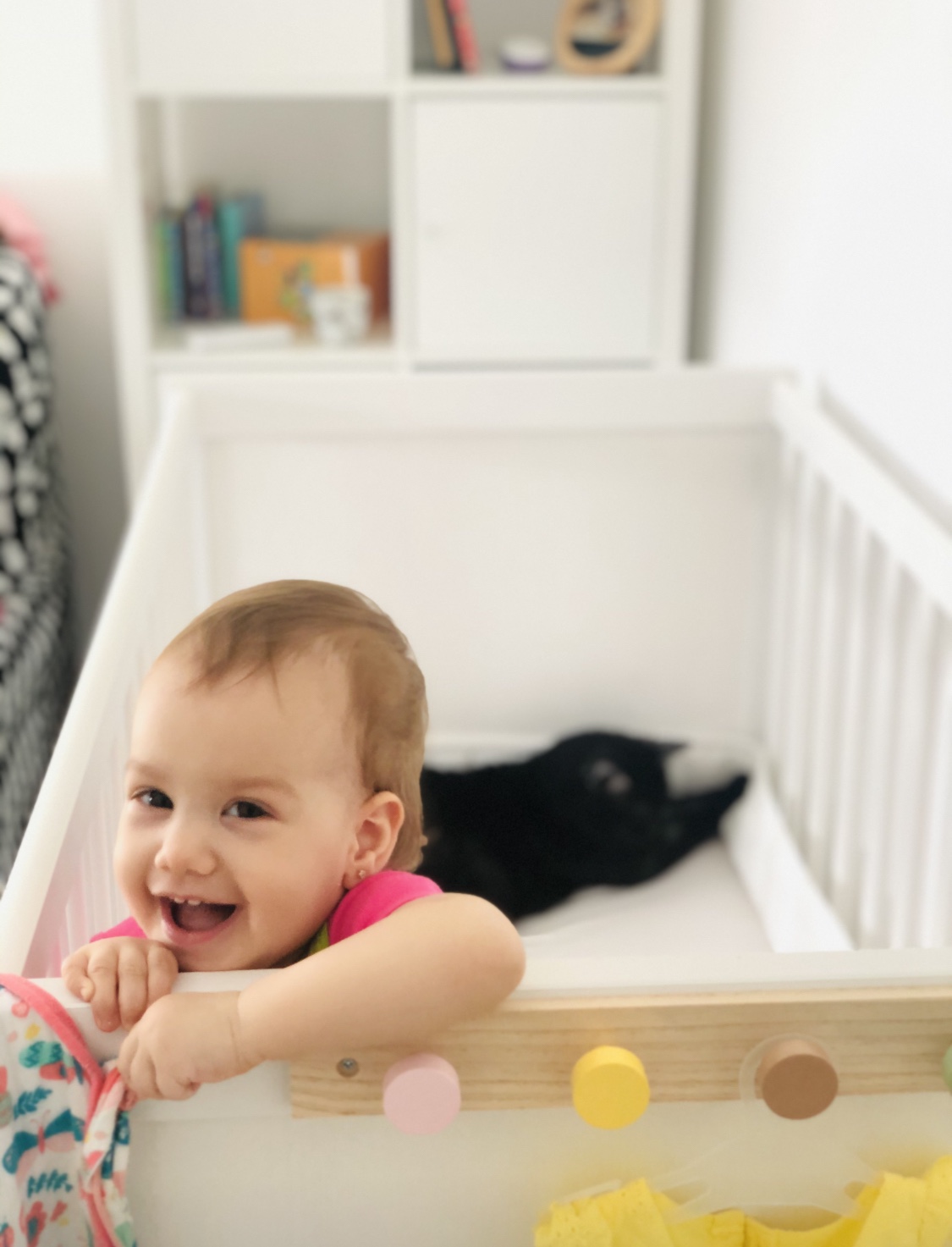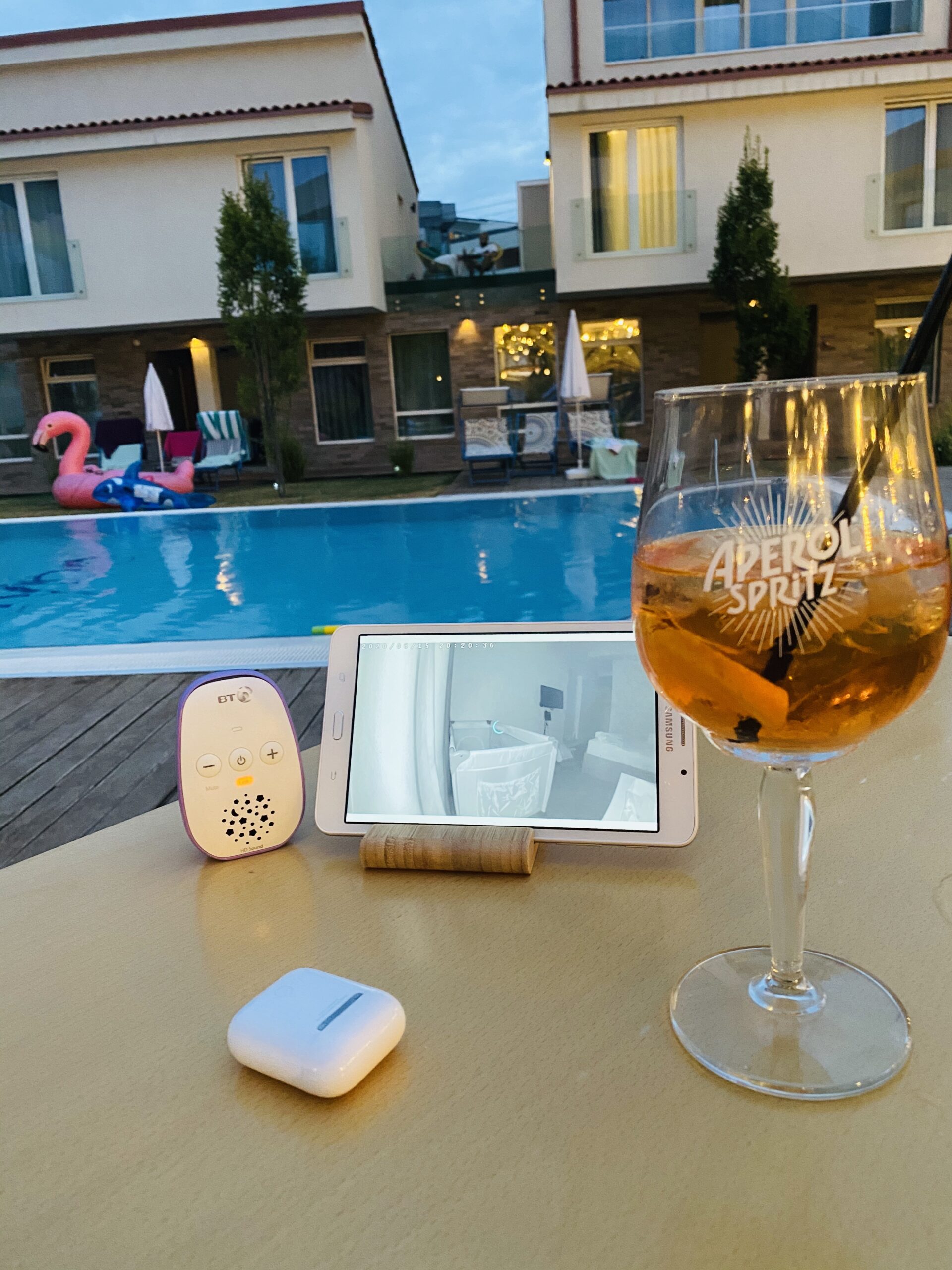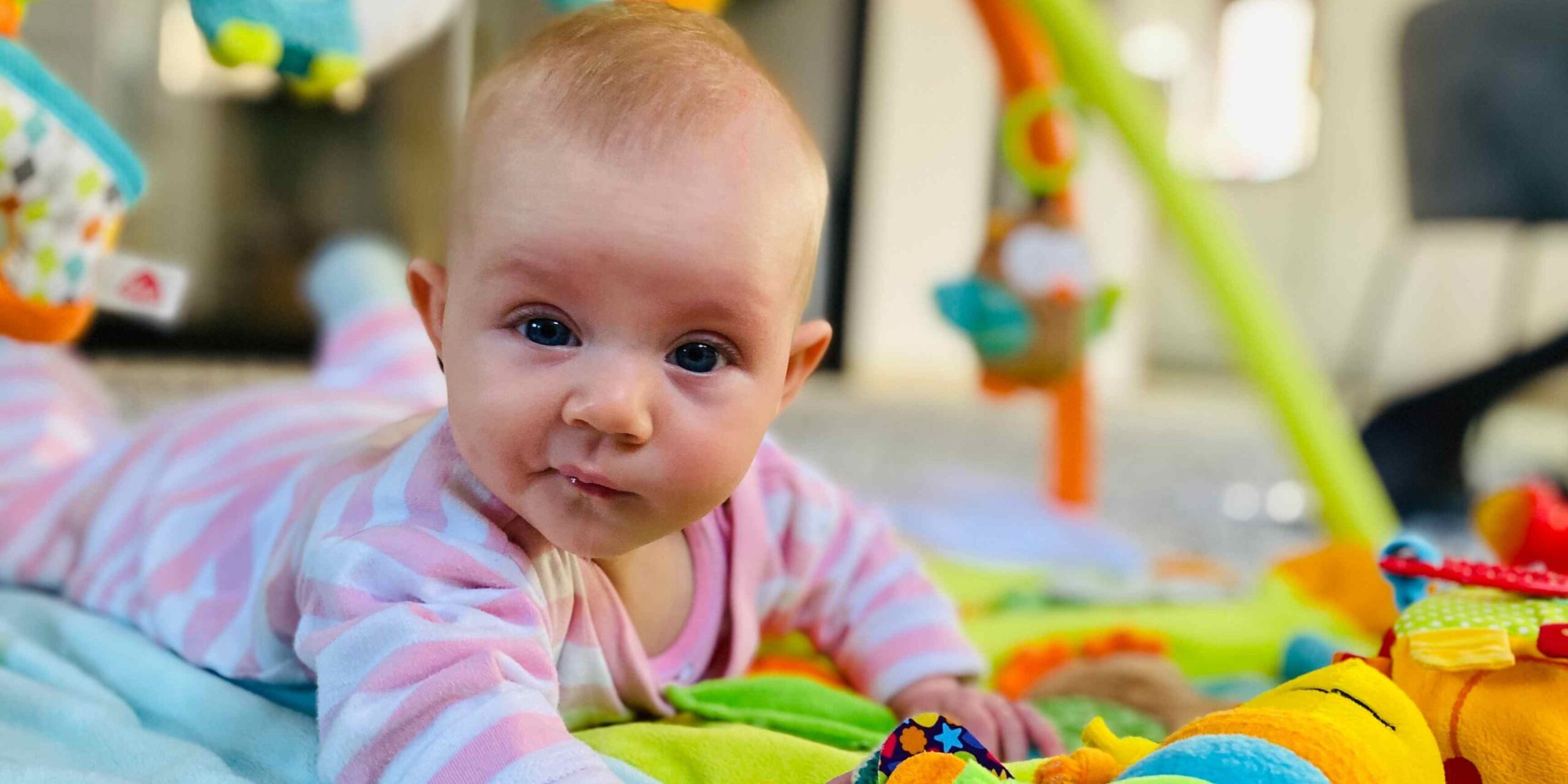Famous aphorism, which originates from 1976, was mentioned by George Box when referring to statistical models. I find “All models are wrong, but some are useful” to be applicable to all the models in our lives, but especially to how we’re supposed to raise our kids. Internet is full nowadays of guides about everything you need to know to raise a child. You’ll find in this article the most important mental and physical baby/toddler development info, so bookmark this page! (Note: I participate in the affiliate amazon program. This post may contain affiliate links from Amazon or other publishers I trust (at no extra cost to you). I may receive a small commission when you buy using my links, this helps to keep the blog alive! See disclosure for details.) Understanding Growth Standards for Children The WHO Child Growth Standards were developed using data collected in the WHO Multicentre Growth Reference Study by the World Health Organisation. The site presents documentation on how the physical growth curves and motor milestone windows of achievement were developed as well as application tools to support implementation of the standards. The below growth curves can guide you in the first 2 years of age: Tracking Your Child’s First Major Gross Motor Milestones As a first time parent I was concerned about how soon my baby girl managed to achieve the major motor milestones. The below chart sums up a comprehensive study by the World Health Organization. You’ll see that the windows of achievement are wide, there is no reason to be concerned if your baby is inside the window. Reference: WHO Multicentre Growth Reference Study Group. WHO Motor Development Study: Windows of achievement for six gross motor development milestones. Acta Paediatrica Supplement 2006;450:86-95. Tracking Mental Development Milestones in Children I’ve mapped below the first 3 years of mental development milestones based on 3 famous books: The Wonder Weeks: A Stress-Free Guide to Your Baby’s Behavior Misbehavior is Growth: An Observant Parent’s Guide to the Toddler Years Misbehavior is Growth: An Observant Parent’s Guide to Three Year Olds The Wonder Weeks: 10 major, predictable, age-linked changes – or leaps – during their first 20 months of babies’ lives: Below is what Amber Domoradzki observed as childhood developmental stages: Creating a Healthy Sleep Schedule for Your Baby I really like how Dr Marc Weissbluth advises In his book Healthy Sleep Habits, Happy Child, 5th Edition: A New Step-by-Step Guide for a Good Night’s Sleep to “watch your child, not the clock”, but still tells you to try and stick to a sleep schedule. A schedule will help you obtain healthy sleep patterns. You’ll baby will give you signs when she/he will be ready to have the sleep schedule adjusted. I shared my experiences with sleep training in this article: https://thebabydatascientist.com/2-successful-sleep-training-methods-to-try/ Navigating Sleep Regressions in Infants and Toddlers Sleep regressions; I’m not sure how real they are, but be aware that they might happen: A Step-by-Step Guide to Introducing Solids to Your Baby’s Diet Introducing solids: the cheatsheet of baby food by months. You’ll find details in this article: https://thebabydatascientist.com/introducing-solids-the-cheatsheet/ Immunization Schedule for Children 0-15 months old: Find below immunization recommendations by the Centers for Disease Control and Prevention (CDC) for Ages 15 months old and younger . Some countries might provide the below vaccines for free based on the national vaccination schema: Encouraging Independent Play in Children Solo play is encouraged and beneficial, but how long can our babies / toddlers play by themselves? at 6 months up to 5 minutes at 12 months 10 to 15 minutes at 18 months up to 20 minutes at 24 months up to 30 minutes A full article on this here: https://thebabydatascientist.com/independent-play-6-to-24-months/ OMG Are they all wrong? Well yes, it will not be 100% applicable to your child. Still, they’re useful. It’s reassuring to know what to expect and that difficult periods are normal.
Category: Sleep
Sleep training is something that you can do by yourself. 90% of success will be ensured by a proper preparation. First, you need to be onboard I have so many friends that ask us many questions about how we managed to get the girls to sleep by themselves and seem to want this for their children, but in the end they end up sleeping in the same bed with them. What is stopping them to go for sleep training? Most parents are aware of the benefits of sleep training but are not preparing emotionally for it. I’ll tell you that even we’ve been through the process twice in 3 years ( 😳 ), we had the same conversation and planned for the sleep training to happen. What triggered the sleep training conversation for us? The first time it was repeated midnight dances to get Bianca to fall asleep. It was obvious that she wasn’t a well rested baby and that us, the parents couldn’t really enjoy the time with the baby because we were so tired.. I thought that having this experience with the first child, I’ll rock as a second time parent, but guess what: babies are not the same and parents change. By 3 months of age white noise wasn’t helpful anymore and Giulia was easily woke up by my slight move during the night. She seemed ready to be sleep trained, but was she too young? Sleep trainers recommend you to wait until the baby is 4 months old to start sleep training. We knew that Giulia is ready to sleep by herself earlier at 3 months of age, so I did some research and I got convinced pretty early by the stats: apparently starting sleep training before the 4 months of age will mean ( on average) 15 minutes less crying. In an ideal situation, both you and your partner get on the same page with sleep training and stick to the plan. Otherwise, you’ll confuse the baby and get frustrated. Prepare the room (Note: I participate in the affiliate amazon program. This post may contain affiliate links from Amazon or other publishers I trust (at no extra cost to you). I may receive a small commission when you buy using my links, this helps to keep the blog alive! See disclosure for details.) These are the points that helped us: The absence of light. You probably heard that if you get into a dark room, your melatonin level goes up and you get sleepy. This works out for your baby as well. So make sure you get some black out blinds: You can use these for travel purposes as well. The perfect temperature. Recommended sleep temperature is around 68 F – 70 F (20 C – 21 C). You can easily reach this and control it with a smart thermostat (that also controls your A/C). If possible, move the baby in their own room + Crib with elastic strip sheets. Baby monitor / Camera + audio monitor. We have both and use them depending on situation. I prefer the Camera + Audio monitor combo as camera connects via Wi-Fi and you can be a bit further away from baby, but still able to monitor them (e.g. when you’re on vacation: you can have the baby sleeping in the room while you get a coffee in the hotel’s lounge/restaurant). We use a D-link camera. White noise: it’s so easy to configure and manage through Wi-Fi the Amazon Alexa Echo Dot to be your white noise machine. Prepare the baby Check also the below boxes, and you can start sleep training tomorrow: Sleeping bag/sack. Nighttime diapers (can hold more urine and your baby won’t get wet ). We love HUGGIES. Give your baby Vitamin D in the morning, so it won’t interfere with the nighttime sleep. Taking the vitamin late in the day may affect sleep. Incorporate in the nighttime routine a warm bath. Follow the sequence: eat- play- sleep. In this way, baby won’t associate eating with sleeping. The final and hardest one: put your baby to sleep drowsy but awake . You’ll rock this after a few tries! If you what to read about the 2 methods I used to sleep train my baby girls, check this link. This is a personal blog. My opinion on what I share with you is that “All models are wrong, but some are useful”. Improve the accuracy of any model I present and make it useful!
A sleep log can significantly reduce the amount of crying during sleep training For most of us, data is very important and in many ways, it helps manage our lives better. I would say this definitely applies to sleep training. If you’re able to record the information in relation to your baby’s sleep and use the data to interpret what went good/bad from the previous days, you’ll be able to minimize the amount of crying during sleep training. (Note: I participate in the affiliate amazon program. This post may contain affiliate links from Amazon or other publishers I trust (at no extra cost to you). I may receive a small commission when you buy using my links, this helps to keep the blog alive! See disclosure for details.) In his book Healthy Sleep Habits, Happy Child, 5th Edition: A New Step-by-Step Guide for a Good Night’s Sleep, Dr Marc Weissbluth advises that you should “watch your child, not the clock”, but also emphasizes the benefits of a sleep log. Yes, it’s important to see when the baby is drowsy, so he/she’ll be ready to sleep, but can we read the sleep signs all of the time? If you’re a first time parent, it’s even more difficult to read the signs. This is one of the most compelling reason why you should keep a 2 weeks’ time sleep log when sleep training your baby. What the sleep log will tell you 1. When your baby is more likely to be ready for day naps; 2. When the optimal time is for the night sleep; 3. How many times have they woken up during the night. What is considered to be normal: 1. Follow a sleep schedule and a consistent bedtime; 2. The Healthy Sleep Habits, Happy Child, 4th Edition: A Step-by-Step Program for a Good Night’s Sleep book recommends 6-7 pm as bedtime (you can get there slowly). 3. Sleep consultants consider that a healthy baby can be night weaned at 8 months of age. I stopped breastfeeding Bianca during the night at 10 months of age and she slept through the night, for 12 hours. Grab your free Sleep Log and let me know how it helped you: This is a personal blog. My opinion on what I share with you is that “All models are wrong, but some are useful”. Improve the accuracy of any model I present and make it useful!
The most important success factor of sleep training is the self soothing amount of time an infant gets Sleep begets sleep says Dr Mark Weissbluth, but in the first 2 weeks of sleep training, the key success factor is the amount of self-soothing time an infant gets. Self-soothing occurs when your baby is able to calm down by themselves and they manage to go to sleep without external help. I’m a mother of 2 and a senior data scientist and I’ll tell you the secret of sleep training: the longer your baby spends self-soothing, the more guaranteed it is for sleep training to succeed. This is the main insight I unlocked from the sleep training data I was able to collect during the 2 sleep training cycles I have gone through with my babies. Create your own sleep training survival kit There is a lot of contradictory information about sleep training on the internet. One thing is clear from the get-go: you’re reading this post because you want to have well rested babies. I can help you create your own sleep training survival kit. (Note: I participate in the affiliate amazon program.This post may contain affiliate links from Amazon or other publishers I trust (at no extra cost to you). I may receive a small commission when you buy using my links, this helps to keep the blog alive! See disclosure for details.) I want to share with you 2 sleep recipes that worked for us: 1. Baby B was sleep trained by a sleep consultant. Assisted sleep training at 4 months old using the 1-3-5 minutes interval method, with the help of a Family Sleep Institute Consultant. 2. Baby G was sleep trained by myself (with the full support of husband). Started self-sleep training at 3 months old by allowing her to learn self-soothe. I first let her try to go to sleep by herself early in the morning (nap 1), when she was most rested. She cried quietly for 30 minutes. I had not intervened because I knew she would cry louder. This method was explained by Dr Marc Weissbluth, in his famous book: Similarities of the 2 methods: 2 weeks duration; Allow the baby to learn self-soothing: don’t pick up with baby at the first sound he/she makes; Keep a sleep log (find a free printable and more info on this here); Consider the safe recommendations of American Academy of Pediatrics Safe Sleep for preventing sudden infant death syndrome (SIDS): – Until their first birthday, babies should sleep on their backs at all times—for naps and at night. – Use a firm sleep surface. Follow a sleep routine (read more on this here); Put the baby to bed drowsy but awake (may not always be possible ); Feed only if hungry (to remove the milk – sleep association); Room setup: the nursery was at least 80% dark, temperature of 70 -72 F (21-22 C ) , white noise for the first part of the night (we used ), video and sound baby monitor on (we used BT ); Baby was properly dressed (pajamas + overnight diapers – these are great) + night bag (Slumbersac are one the best we had) Last, but not least, we cat-sleep-trained Tasty and Lestat and left them in the living room. Leave nothing to chance when trying to achieve the ultimate goal: a good night’s sleep. What was different: 1. Sleep consultants recommend starting sleep training at 4 months of age (we did this with our first born, but started at 3 months of age with our youngest baby – based on Dr Marc’s book – Healthy Sleep Habits, Happy Child, 5th Edition: A New Step-by-Step Guide for a Good Night’s Sleep). 2. We started sleep training with the night sleep in baby B’s case. This meant that we used the 1-3-5 minutes interval rule to check and console her if she cried. And yes… she cried. I personally don’t think that there are any babies that do not cry at all during sleep training. With this method, you wait and see if your baby can self soothe. 3. Baby G responded promptly to the sleep training. Normal routine would entail putting her to sleep drowsy but awake. If her immediate reaction was not good (instant crying): I would pick her up, help her calm down and try again, then leave the room and wait for her to fall asleep. Teaching your baby how to fall asleep by themselves is one of the most important life skills that they will learn. You can do this as early as 3 months of age and the result will be amazing: a happy and well rested kid, just like mine. This is a personal blog. My opinion on what I share with you is that “All models are wrong, but some are useful”. Improve the accuracy of any model I present and make it useful!




